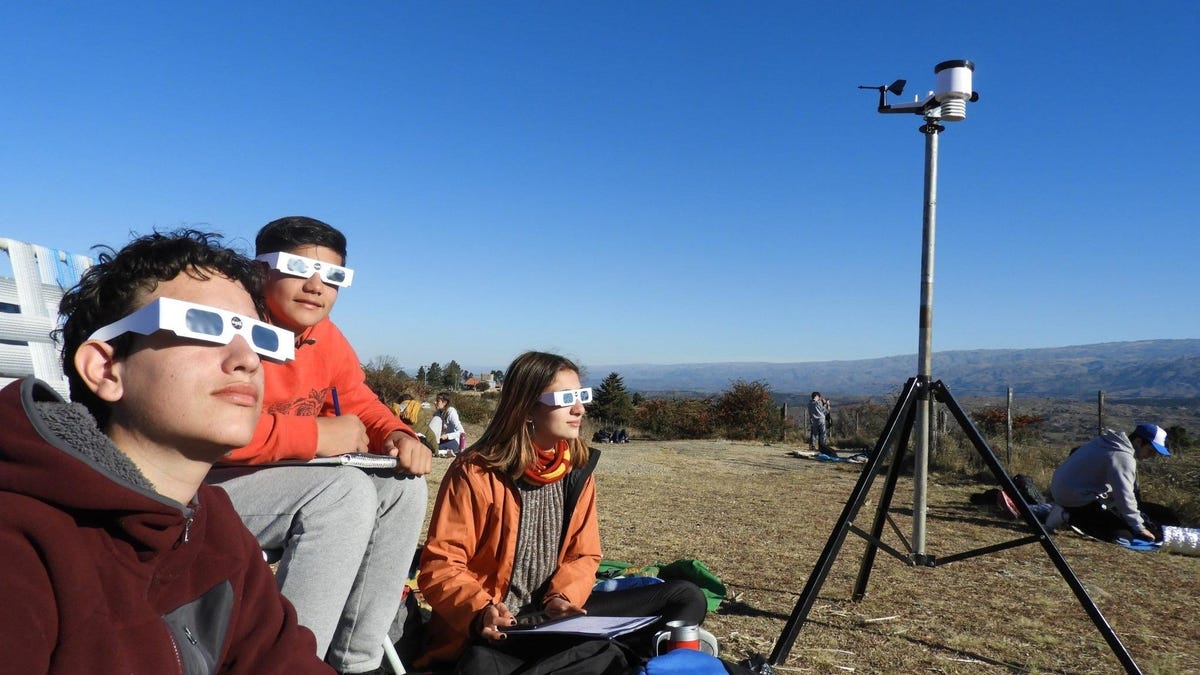Significant Projects for the 2024 Solar Eclipse
With the imminent approach of the Great North America Solar Eclipse on April 8, several remarkable projects are poised to contribute invaluable scientific data during this extraordinary event. While these initiatives are already well underway, there is still an opportunity for individuals to participate and make a substantial impact.
Making TV History with Star Trek: Discovery
The forthcoming solar eclipse, spanning from Mexico through Canada’s maritime provinces, presents not only a breathtaking spectacle but also a unique chance for important scientific endeavors that depend on the involvement of citizen scientists.
GLOBE Eclipse
One such initiative is the NASA-led GLOBE Eclipse project, a global citizen science program that enables volunteers to engage in Earth science research through a specialized smartphone app. Participants can contribute by documenting various phenomena, such as cloud types, land cover, and atmospheric conditions during the eclipse. This wide-ranging data collection supports Earth system science research, providing valuable insights accessible to scientists and students, and is open to individuals with smartphones, regardless of specialized knowledge.
Eclipse Soundscapes
Funded by NASA Science Activation, the Eclipse Soundscapes project aims to gather multi-sensory observations and sound data during the solar eclipse to study its impact on local ecosystems. Participants are encouraged to take recordings before, during, and after the eclipse, capturing how these events affect animal and plant behavior. This inclusive project is designed to engage both sighted and visually impaired individuals, providing opportunities for sensory experiences in eclipse science.
Sunsketcher
NASA’s SunSketcher project involves volunteers in measuring the Sun’s shape during the eclipse using a free smartphone app. Participants are tasked with capturing Baily’s Beads to reveal insights into the Sun’s structure and gravity theories. By utilizing smartphone observations, Citizen Scientists situated along the eclipse path will contribute to revealing the solar disk’s precise shape during this unprecedented opportunity in 2024.
Eclipse Megamovie
The Eclipse Megamovie project will capture the dynamics of the solar corona, including jets and plumes, during the total solar eclipse using DSLR cameras mounted to tripods. Volunteers from various locations will collaborate to create a continuous movie of the eclipse, offering valuable data for scientific analysis and public participation in astronomical research.
Radio JOVE
NASA’s Radio JOVE project allows participants to observe and study radio emissions from the Sun and Jupiter using a simple radio telescope. This initiative aims to enhance understanding of solar and planetary radio emissions and promote radio astronomy as a hobby, offering opportunities for volunteers to engage in scientific exploration.
HamSCI
HamSCI, the Ham Radio Science Citizen Investigation project, brings together amateur radio operators and professional scientists to study the ionosphere’s response to solar radiation changes during the upcoming eclipse. Amateur radio enthusiasts contribute by recording signal strengths and communication ranges, providing valuable data for understanding ionospheric variations and scientific research.
The Citizen Continental-America Telescopic Eclipse (CATE) 2024 experiment
The U.S. National Science Foundation is organizing educational events and research activities for the total solar eclipse on April 8, including public experiments and a livestream. The Citizen Continental-America Telescopic Eclipse 2024 experiment involves community teams of citizen scientists who will take continuous observations along the path of totality, complemented by specialized observations from NSF’s high-altitude research aircraft and the Daniel K. Inouye Solar Telescope.
The University of Texas at Dallas’ ScintPi Sensors Project
Researchers at the University of Texas at Dallas are utilizing ionospheric scintillation monitors, ScintPi sensors, originally designed to study the Earth’s upper atmosphere, for the upcoming total solar eclipse. These adaptable sensors gather crucial data on ion density by receiving radio signals from satellites during the eclipse, offering citizen scientists a unique opportunity to contribute to solar and ionospheric research.
Image/Photo credit: source url





